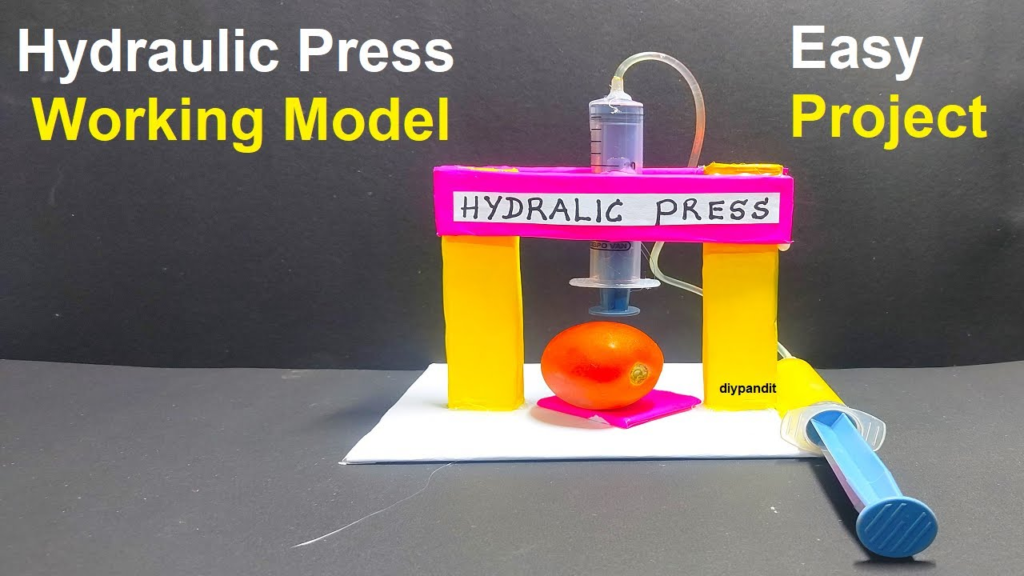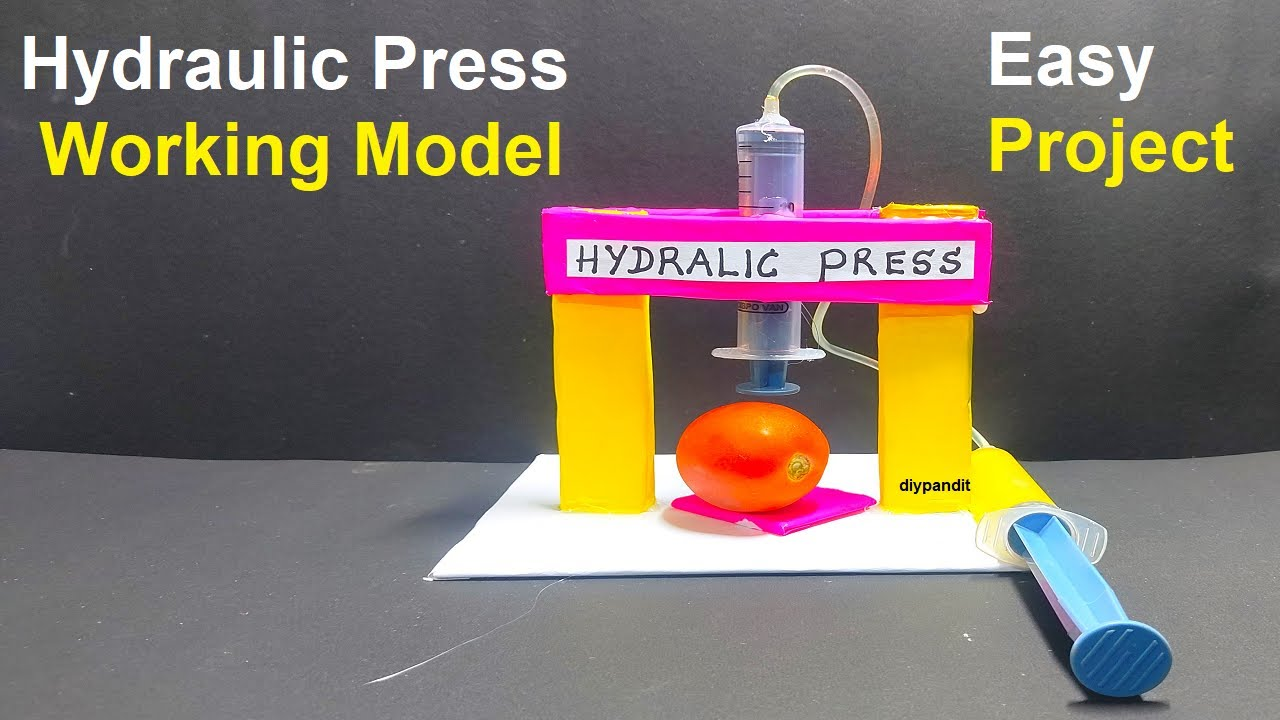A hydraulic press working model demonstrates how a hydraulic system uses fluid pressure to exert a large amount of force, capable of compressing, shaping, or moving heavy objects. This model simulates the operation of a hydraulic press, which is widely used in industries for tasks like metal forming, car repairs, and plastic molding.

Key Components of the Model:
- Hydraulic Cylinder: The main component of the press, which consists of a large cylinder where hydraulic fluid (usually water or oil) is pumped to exert force.
- Small and Large Pistons: A smaller piston (called the master piston) is connected to a larger piston (the slave piston). The small piston generates pressure, which is transferred to the large piston to create force.
- Hydraulic Fluid: Water or vegetable oil is used as the fluid to transmit pressure between the pistons.
- Plastic Tubing or Pipelines: Flexible tubes connect the small piston and the large piston, allowing the hydraulic fluid to flow between them.
- Pressing Plate: A plate or platform attached to the large piston where the object to be compressed or shaped is placed.
How It Works(Hydraulic press working model):
- Set Up the System: Connect the small and large pistons using plastic tubing, ensuring that hydraulic fluid can flow freely between the two. The large piston is connected to a pressing plate.
- Pressurizing the Fluid: When you apply force to the small piston, the hydraulic fluid is forced into the larger piston. According to Pascal’s Law, pressure applied to the fluid in a confined space is transmitted equally in all directions.
- Force Transmission: The pressure from the small piston (master piston) is transferred to the larger piston, causing it to move with great force. This large piston exerts a significant amount of force on the object placed on the pressing plate, allowing it to be compressed or shaped.
- Compression or Shaping: The object placed on the pressing plate is compressed or manipulated by the force exerted by the large piston.
Applications and Learning:
- Real-Life Insight: This model demonstrates the power of hydraulic systems, like those used in car lifts or industrial presses, where small amounts of force can move heavy objects.
- Educational Value: It illustrates the principles of Pascal’s Law, fluid pressure, and mechanical advantage in a simple, hands-on way.
This hydraulic press model is an excellent way to understand how hydraulic systems work and the concept of force multiplication, making it perfect for science projects or classroom demonstrations on hydraulics and physics.

